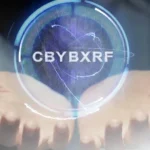Imagine the thrill of seeing your hand-drawn characters come to life, moving and interacting in a world of their own. That’s what cel animation can do.
For decades, this technique has turned simple sketches into amazing stories. It’s a meticulous process, but the results are pure magic. Whether you’re an experienced animator or just curious about the craft, exploring cel animation feels like uncovering a world full of creative secrets.
In this guide, we’ll dive into everything you need to know about cel animation. From the basics to the little details that make hand-drawn animation so special. So, grab your tools and let’s jump into the fascinating world of cel animation!
What is Cel Animation?
Cel animation, short for celluloid animation, is a traditional animation technique where each frame is drawn by hand. It’s like creating a flipbook, but way more detailed. This method has been around for ages, giving us classics like “Snow White” and “The Lion King.”
The magic of cel animation lies in its charm and craftsmanship. Each frame is a piece of art, carefully crafted to bring characters and stories to life. Despite the rise of digital animation, cel animation holds a special place because of its unique, hand-made feel.
Tools and Materials Needed for Cel Animation
Before you start animating, you’ll need some tools. First up, pencils and paper for sketching your initial frames. Then, celluloid sheets (cels) where you’ll ink your drawings. Paints or markers are used to color the cels.
In modern times, digital tools have made their mark too. Software like Toon Boom Harmony or Adobe Animate can replicate the traditional cel animation process digitally, making it easier and faster while keeping that hand-drawn look.
The Process of Cel Animation
Let’s break down the steps to creating cel animation in detail:
Step 1: Concept and Storyboarding
- Concept Development: This is where the magic begins. Start by brainstorming your story ideas and themes. Create a solid concept that will guide your animation.
- Storyboarding: Draw a sequence of sketches that outline the key scenes and actions. This acts as a visual script and helps you plan out your animation’s flow.
Step 2: Creating Keyframes and In-betweens
- Keyframes: Draw the main poses or positions of your characters. These are the essential frames that define the major points of movement.
- In-betweens: Fill in the gaps between the keyframes to create smooth transitions. This step is crucial for achieving fluid motion.
Step 3: Drawing and Inking
- Pencil Sketches: Start with rough pencil sketches of your keyframes and in-betweens. Make sure your lines are clean and precise.
- Inking: Trace over your pencil sketches on cels using ink. This step requires a steady hand and attention to detail.
Step 4: Coloring
- Selecting Colors: Choose a color palette that fits your animation’s style and mood. Consistency is key to maintaining visual coherence.
- Painting: Apply colors to the back of the cels to prevent the ink outlines from smudging. Use paints or markers to fill in your drawings.
Step 5: Filming
- Setup: Arrange your painted cels on a background and place them under a camera.
- Shooting: Film each cel frame by frame, making sure each one is perfectly aligned. This step brings your static drawings to life.
Creating cel animation is a labor of love, requiring patience and precision. But seeing your characters move and express themselves is an incredibly rewarding experience.
Techniques for Mastering Hand Drawn Animation
Mastering hand drawn animation involves several key techniques. Let’s delve into the most important ones:
Timing and Spacing
- Timing: This refers to the number of frames between poses. Fewer frames create faster movement, while more frames slow it down. Good timing makes actions look natural.
- Spacing: This is the distance between drawings in each frame. Even spacing results in smooth motion, while varied spacing can create dynamic effects.
Squash and Stretch
- Squash: Compressing the character to emphasize speed or impact. Think of a bouncing ball flattening when it hits the ground.
- Stretch: Elongating the character to enhance motion. Like the same ball stretching when it’s in the air. This technique adds flexibility and life to your animation.
Anticipation and Follow-Through
- Anticipation: Preparing the audience for a major action. For example, a character bending their knees before jumping.
- Follow-Through: Actions that continue after the main movement has finished. Like hair or clothing that keeps moving after the character stops. These techniques make animations look more realistic.
Exaggeration
- Purpose: Amplifying actions or emotions to make them more visible and engaging. Exaggeration is a key part of animation’s appeal, making characters more expressive and lively.
Patience
- Example: Disney animators had to draw over a million frames for “Snow White”? It was a painstaking process, but it resulted in a timeless classic. Their dedication to techniques like squash and stretch, anticipation, and follow-through set the gold standard for animation.
Mastering these techniques takes practice, but they are fundamental to creating compelling hand-drawn animations. Keep experimenting and refining your skills to bring your characters to life in the most captivating way.
FOR MORE INFORMATION CLICK HERE : birthday gifts
Notable Works and Animators in Cel Animation
Think of classics like “Snow White and the Seven Dwarfs” or “Akira.” These films showcase the beauty and depth of cel animation. Legendary animators like Walt Disney and Hayao Miyazaki have mastered this craft, creating timeless pieces that continue to inspire.
Cel Animation vs. Modern Animation Techniques
Cel animation has its charm, but modern techniques have their perks. Digital animation is faster and allows for more complex effects. IF you are wondering how to make anime content, this is how it is done these days. However, the tactile, handcrafted feel of cel animation is unmatched. It’s like comparing a painting to a digital photo. Both have their unique appeal.
Conclusion
We’ve covered a lot about cel animation, from its tools to its timeless techniques. This art form, though painstaking, offers a unique charm that digital methods can’t fully replicate. So, whether you’re an aspiring animator or a fan, cel animation is a fascinating world worth exploring.







